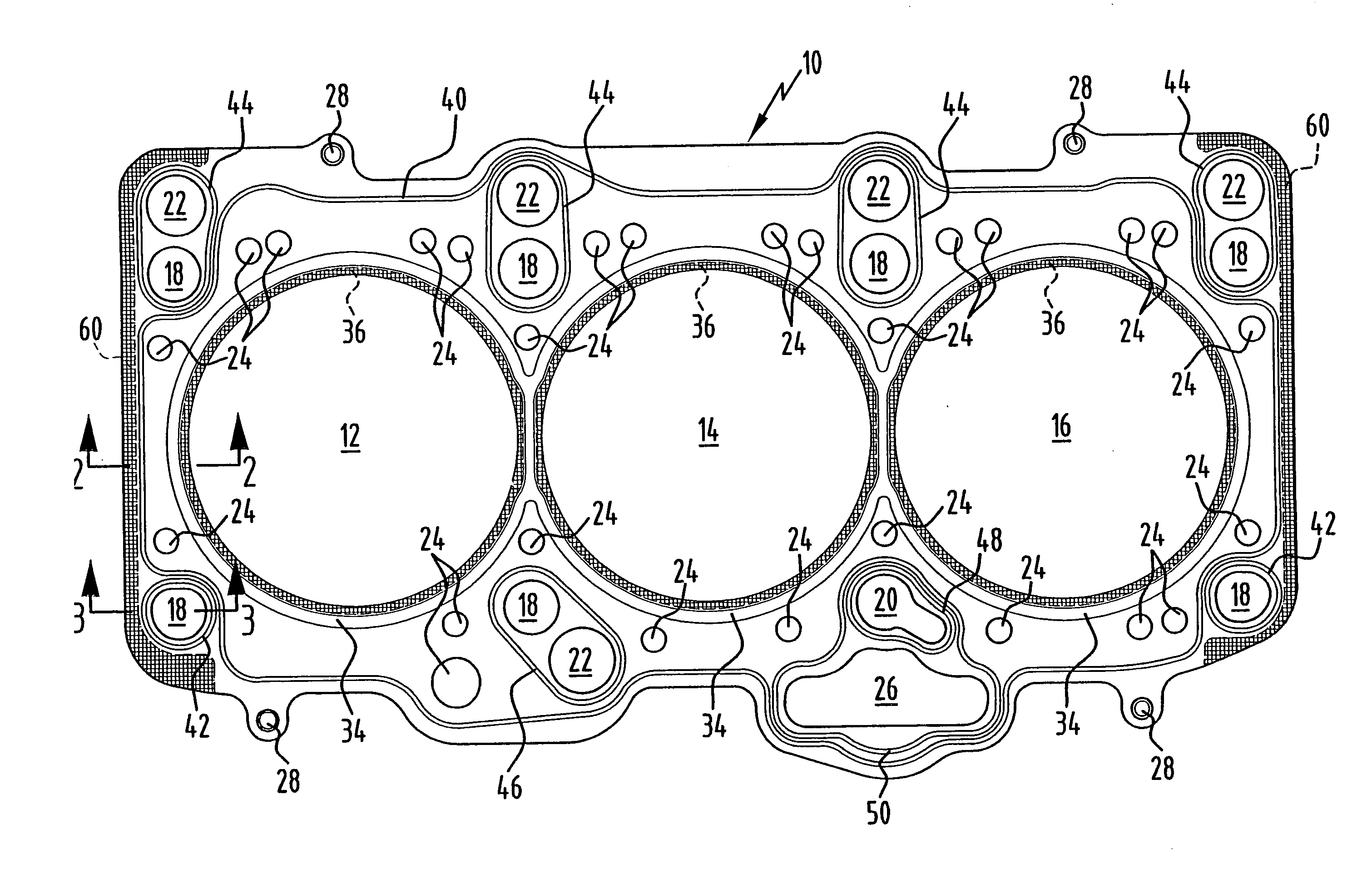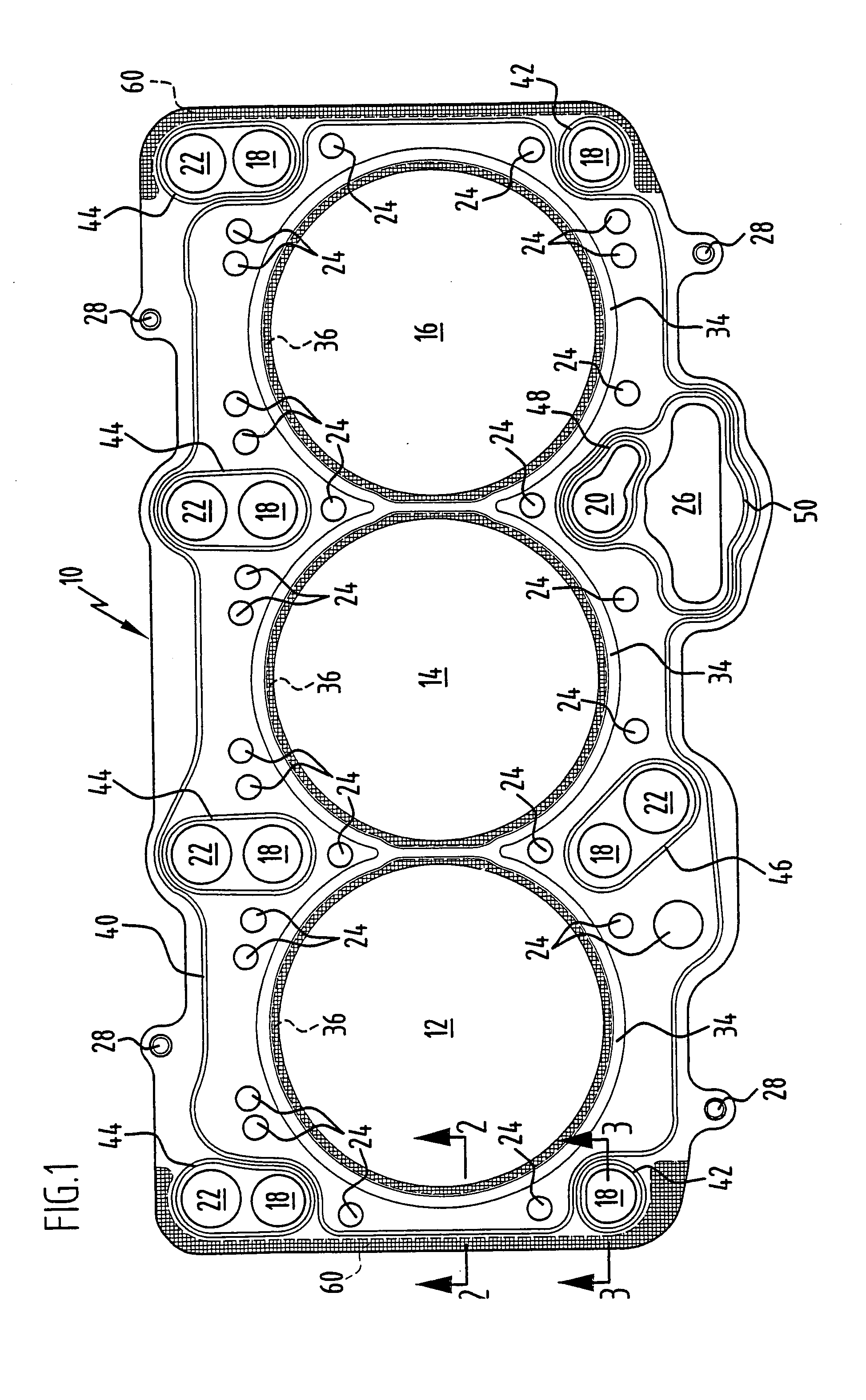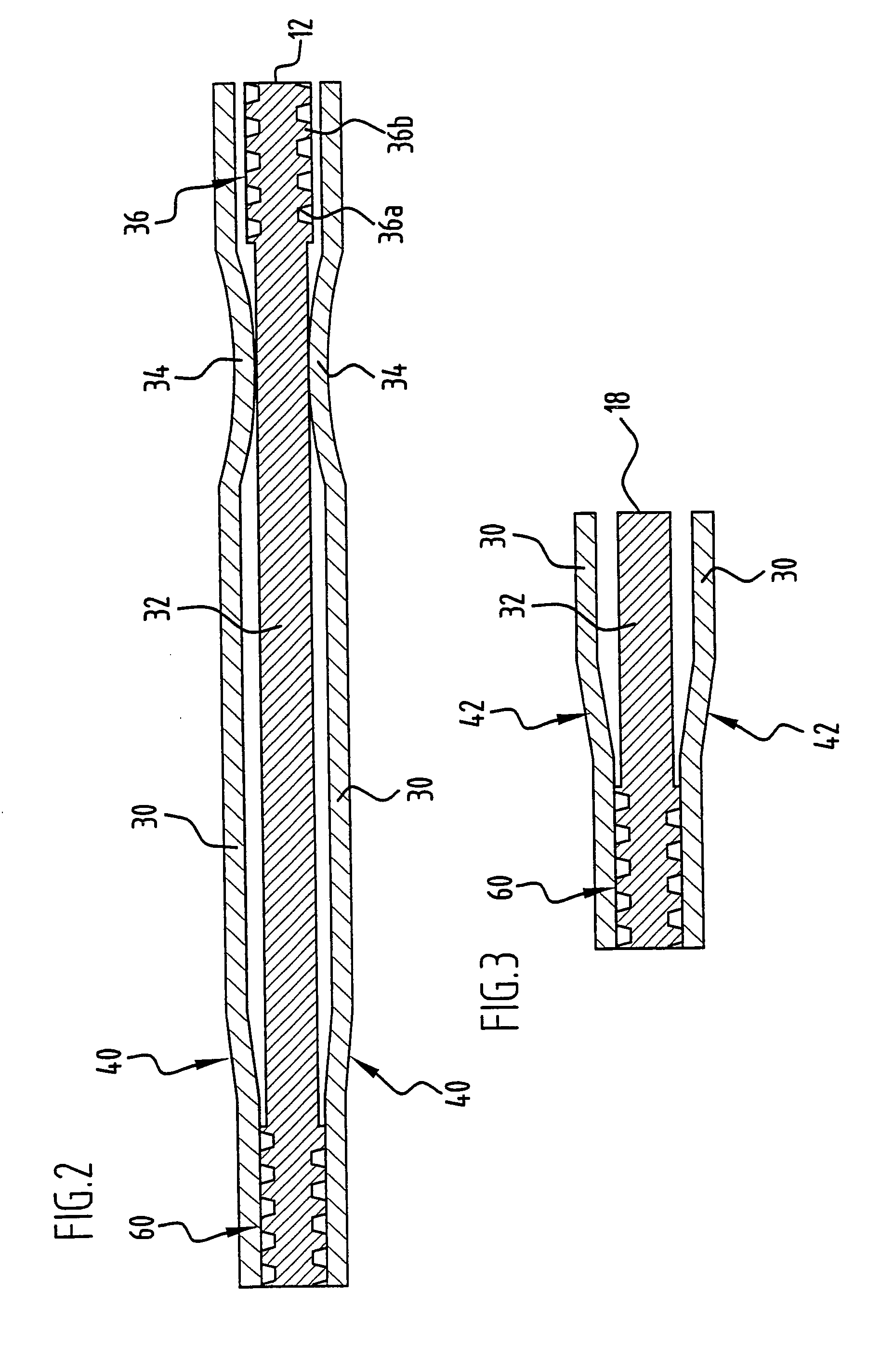[0015] The supporting devices in question differ, however, quite fundamentally from stoppers: Whereas a spring-elastic sealing bead to be protected by a stopper is always associated with this stopper and the stopper is located in the direct vicinity of the sealing bead and extends at least essentially over the entire length of the sealing bead and around an aperture of the gasket to be sealed, a supporting device according to the present invention has none of these features characteristic of a stopper even if a sealing bead can extend in the vicinity of a supporting device—in this case, the supporting device extends only along a section of the sealing bead which is much shorter than the overall length of the sealing bead; further, the effective height of the supporting device may be the same as or even greater than the height of the bead. Therefore, the supporting device shall not take over the function of protecting the sealing bead from any excessive flattening.
[0016] In the case of a multi-layered, inventive cylinder head gasket, the supporting device or the supporting devices can be provided in the same sheet-metal layer as the sealing device or the sealing devices or in another layer since it is, primarily, only of importance for the thickness of the compressed cylinder head gasket to be increased at the location of the supporting device. In a plan view of the cylinder head gasket, the distance of the supporting device from the sealing device located closest to it is generally, at least over a greater part of the length of this sealing device, considerably greater than the width of the sealing device (measured in a radial direction with respect to the aperture of the cylinder head gasket which is to be sealed and is associated with the sealing device), namely even when the sealing device consists of one or several sealing beads and one or several stoppers protecting them. When a greater material thickness or a greater overall thickness in the area of a supporting device is mentioned in the above, the material thickness or the thickness of the supporting device is to be understood as the distance between two tangential planes which extend parallel to the plane of the gasket plate and are tangent to the supporting device on both sides and enclose it between them. The apertures of the cylinder head gasket which are to be sealed are to be understood primarily as its combustion chamber apertures; if the cylinder head gasket does, however, have apertures for the passage of, for example, a cooling medium or of oil which are to be sealed with one or several sealing devices of the cylinder head gasket, such as is the case for, e.g., a sealing bead which extends in the vicinity of the periphery of a cylinder head gasket, forms a complete, continuous line and encloses a group of such apertures of the cylinder head gasket which have a fluid flowing through them, the definition that the thickened supporting area of an inventive supporting device does not enclose any of these apertures completely or almost completely also relates to this case. Furthermore, preferred embodiments are characterized by the fact that when the cylinder head gasket has a sealing bead adjacent to an inventive supporting area, the supporting area extends only over a smaller part of the length of the sealing bead adjacent to it, i.e., over less than half the length of this sealing bead.
[0017] As is apparent from the preceding explanations, component warpages or deformations occur in the case of multi-cylinder engines, in particular, in the area of the longitudinal ends of the engine. In the case of a cylinder head gasket with an elongated gasket plate which has several combustion chamber apertures between its two longitudinal ends, at least two inventive supporting areas, which are arranged in the vicinity of the longitudinal ends of the gasket plate, will, therefore, be expediently provided. In the case of a cylinder head gasket with an elongated gasket plate which has several combustion chamber apertures between its two longitudinal ends, screw apertures for the passage of cylinder head screws are normally provided in the vicinity of these longitudinal ends; when a cylinder head gasket is installed, increased pressing forces result around the cylinder head screws and this applies, in the case of a cylinder head gasket for a multi-cylinder engine, to an even greater extent for the cylinder head screws adjacent to the longitudinal ends of the gasket since these screws are associated only with the two terminal combustion chambers whereas cylinder head screws arranged between adjacent combustion chambers are associated with two respective combustion chambers, for which reason, in preferred embodiments of inventive cylinder head gaskets for multi-cylinder engines, at least two inventive supporting areas are provided which are located in the vicinity of the screw apertures adjacent to the longitudinal ends of the gasket plate.
 Login to View More
Login to View More  Login to View More
Login to View More 


